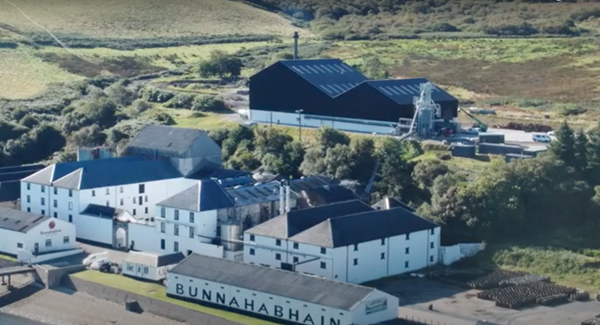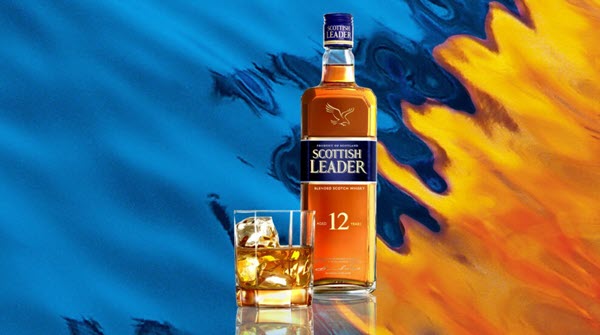CVH Spirits - A New Force in Scotch
A clutch of single malts and a couple of blends, once known as Burn Stewart Distillers, now has a new South African owner as Ian Fraser reports for WhiskyInvestDirect…
There has been a new dawn at the East Kilbride-based group that owns Bunnahabhain, Deanston, Ledaig and Tobermory single malts as well as Scottish Leader and Black Bottle blends.
On 27 April the company formerly known as Distell International became CVH Spirits, an acronym for Capevin Holdings and its new, somewhat touchy-feely, strapline - ‘Collaborative, Visionary, Human’.
This happened because Dutch brewing giant Heineken finally completed its long-drawn-out $2.6 billion takeover of the bulk of Distell Group that day, with the Scotch whisky business, earlier known as Burn Stewart Distillers, being “spun out” under ownership of Capevin Holdings which is itself 59.5% owned by the diversified South African investment group Remgro.

The business, like most in the Scotch industry, has been performing well since the Covid pandemic.
In the year to 30 June 2022, pre-tax profits jumped 127% to £17.7m, while turnover increased 16% to £133.4m. Inventories were £118.6m, of which £103m was classified as “maturing spirits and other work in progress”.
The figures showed the UK to be the group’s biggest market, accounting for 33.7% of overall sales, followed by Asia-Pacific (25%), and continental Europe (23%). The remaining 18.2% was split between Africa, the Americas and Global Travel Retail.
CVH Spirits marketing director Gillian Skinner doesn’t expect any material change of direction under the new ownership structure, saying the focus remains on the territories where CVH Spirits is already established – the UK, continental Europe and Asia-Pacific – with perhaps a harder push into North America.
Skinner added: “Due to the size of our brands in the context of the single malt Scotch whisky category globally, all of our brands are growth brands. Depending on our position in key markets, we continue to invest appropriately, with a focus on our digital channels and improving consumer experiences.”
She said the group’s flagship single malt has just organised a “Bunnahabhain Day'' at the annual Islay whisky festival, Feis Ile, which it has sought to make accessible for those unable to make it to the Island through the addition of “virtual experiences”. She also highlighted Tobermory’s recent partnership with wildlife filmmaker Gordon Buchanan, aimed at promoting sustainability and raising awareness of the Inner Hebridean island’s beauty and ecosystem.

Although Skinner admits blends “can be challenging”, she said her two; Scottish Leader and Black Bottle, will remain a key part of the mix, pointing out that the former is number two selling blended Scotch in Taiwan.
The brand is also beginning to take off in India, where Asia-Pacific managing director Guirec Danno said its sales have increased tenfold since it was introduced as a BII (bottled in India) product.
In another interview Danno said: “At Scottish Leader we believe in having an open mind, in collaborating with like-minded people, and looking at whisky and life from a new perspective.” He said the company is looking to add premium variants of Scottish Leader, predicting it could readily become a one-million case brand in the subcontinent.

In South Africa, CVH brands have traditionally piggy-backed off the distribution channels of Distell’s clutch of locally-produced whiskies – Bain’s, Three Ships and Harrier. With that no longer possible, Skinner said that CVH is “finalising negotiations with a new distributor in South Africa.”
Skinner does not accept that CVH’s three Scottish distilleries – Bunnahabhain, Deanston, Tobermory – have been under-funded. “Over the last few years, we’ve invested heavily not only in our distilleries and visitor centres but also in our bottling, blending and warehousing facilities.”
She stressed achieving net-zero by the Scotch Whisky Association’s target of 2040 is paramount, adding: “while we’re making strong progress in areas such as biomass at Bunnahabhain and hydropower at Deanston, we continue to look for opportunities to improve.” Last December, Bunnahabhain won Sustainable Development of the Year at the Scottish Green Energy Awards for its biomass plant.
There have been suggestions Capevin-Remgro might be considering a rapid “flip” or sale of the Scotch whisky business given the price it paid - which some have described as ‘a steal’. Last month, a leading South African financial journalist Marc Hasenfuss wrote: “There’s speculative buzz that a number of suitors are keen on these whisky assets.”
However, Skinner plays down such talk. “Our shareholders are successful and astute businesspeople with significant expertise in the luxury market. They have also been long-term investors who really care about the future of CVH Spirits and while we work through some of the outputs of the transaction, we know that they have a long-term vision for the success and growth of our people and brands.”
“While no opportunity is ever off the table, the business is positioned for significant growth over the next ten years. The successful strategy we began implementing three years ago is still our focus.”
Burn Stewart to CVH
The group’s history has been somewhat a chequered one. In its early days Burn Stewart, founded in 1948, focused on selling bulk and own-label Scotch, but switched to branded whiskies in the 1990s. It was taken over by a group of leading industry figures, including ex-Hiram Walker finance director Bill Thornton, for £7m in 1988. Under their leadership the company bought the Deanston distillery near Doune, and in 1991 floated on the London Stock Exchange, with an initial £83m valuation.
The company’s life as a listed entity was a troubled one and came to an end in 2002, when it was sold for just £49m to Trinidad-based CL Financial. Under CL’s ownership, Burn Stewart bought Bunnahabhain and Black Bottle from Edrington before it was bought by Distell Group for £160m after CL Financial got into financial difficulties and had to be rescued by the Trinidadian government in 2013.
The company’s new majority owner, Stellenbosch-based Remgro, is an investment vehicle of the Rupert family, who made their fortune from cigarette brands such as Rothmans, Dunhill and Peter Stuyvesant. They also control Switzerland-based Richemont, owner of Cartier, Dunhill, Montblanc, and Van Cleef & Arpels, which is the world’s second-biggest luxury goods seller after Bernard Arnault’s LVMH.

Ian Fraser is a financial journalist, a former business editor of Sunday Times Scotland, and author of Shredded: Inside RBS The Bank That Broke Britain.




